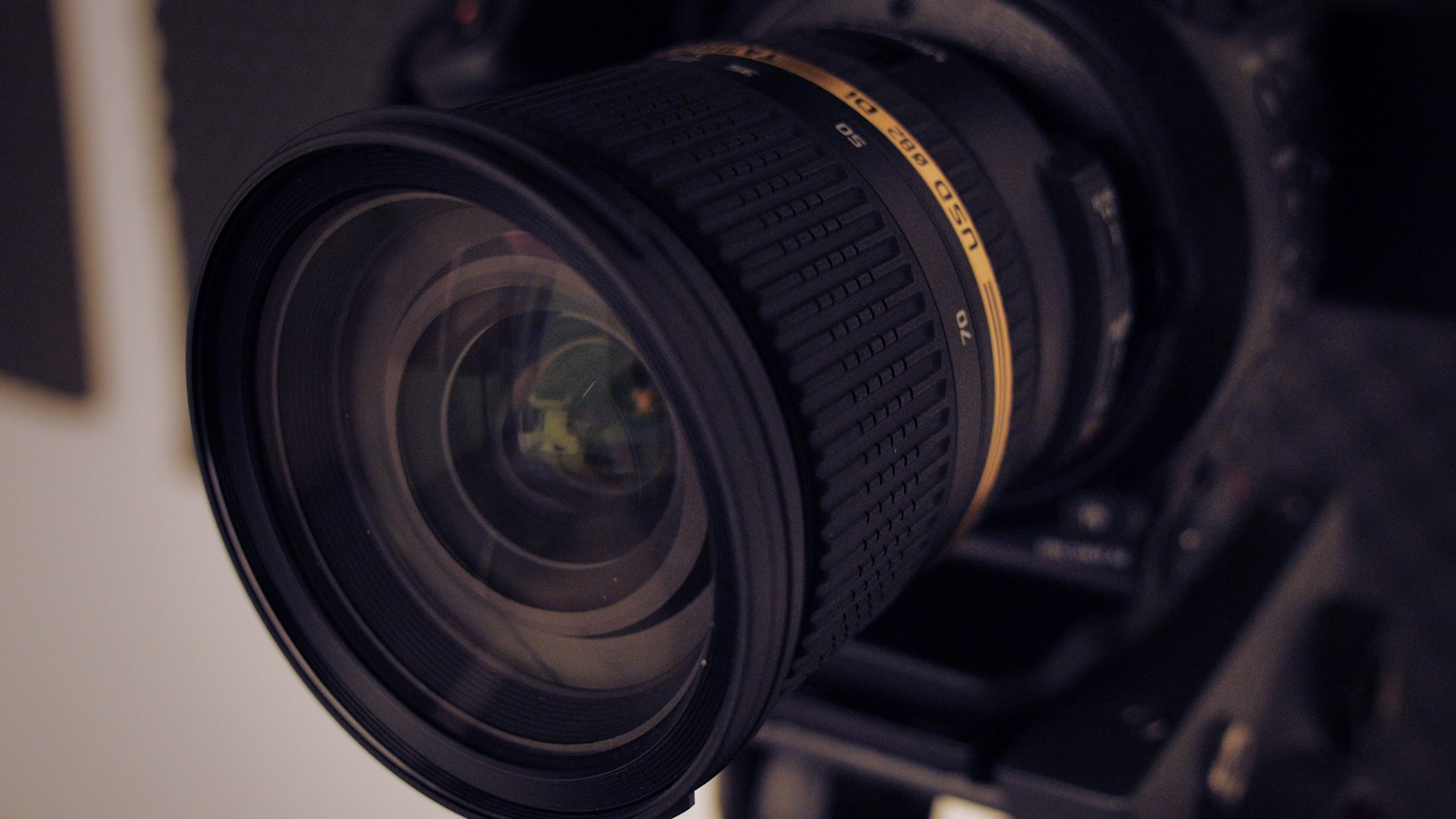You’ve probably heard about them and probably have seen them slung around the shoulder of countless tourists and photo-enthusiasts. Or maybe you’ve just heard those 4 letters strung together D–S–L–R in association with camera…
But what the heck is a DSLR or Digital SLR? And why is everyone using them to make videos?
Well, here’s the simple definition:
Digital Single Lens Reflex Camera.
A Single Lens Reflex (SLR) camera allows light to travel through a single lens, and a mirror is used to reflect a portion of that light through the view finder (hence the name Single Lens Reflex). The image that is seen through the view finder is also the image that is captured by the camera’s sensor. A Digital SLR or DSLR replaces film with of course digital, giving the photographer an viewable image on the digital camera back.
 Right now, there is an explosion of DSLR’s coming out. They are so popular right that it feels like a new one is coming out every week. Every camera company known to man, from Canon to Nikon to Panasonic to Sony, have a wide range of Professional and Consumer level Digital SLR’s. And the best part? They produce some of the best images both in photographs and video.
Right now, there is an explosion of DSLR’s coming out. They are so popular right that it feels like a new one is coming out every week. Every camera company known to man, from Canon to Nikon to Panasonic to Sony, have a wide range of Professional and Consumer level Digital SLR’s. And the best part? They produce some of the best images both in photographs and video.
More Than Just Photos
The DSLR is the most recommended camera for photographers just starting out. But there’s more to this camera than just still images. There’s an increasing trend of videographers and filmmaker out there using DSLR for video.
With the ability to shoot in a wide range from full High definition 1080p (1920×1080 pixels) to standard 480p (640×480 pixels), and anywhere from 24 to 60 frames per second, DSLR’s (or more specially HDSLR’s) are sparking a revolution in digital filmmaking. You don’t need that huge budget to make your movie or commercial. HDSLRs can achieve much shallower depth of field and superior low-light performance, giving your product that top-notch cinema feel.
So Let’s Break it Down:
Here are the basic advantages for a Digital SLR:
Size: DSLR’s are small, compact and portable. You can take them anywhere to get that perfect shot. On the video side, they are perfect for shooting a documentary and interviews because they can comfortably fit into a small office or room for an intimate interview with enough room for lights, sound and all kinds of other contraptions.
Sensor: The reason for the great quality of image is because DSLR’s large sensors. Some like the Canon 5d Mark II, have a full frame sensor which is the equivalent of 35mm film. Those little ‘point and shoot’ cameras, like a Nikon CoolPix, use sensors that are approximately 5% and 4% of the area of a full frame sensor. Essentially, Larger Sensors allows for larger pixel sizes and better Image Quality.
Image Quality: Just how good are DSLR’s? Well, a good portion of broadcast commercials, TV shows, and even major motion picture are being shot with them. Marvel’s The Avengers (yes, one of the highest grossing movies of all time) used five Canon EOS 5D Mark II and two Canon 7D to shoot the scenes from various vantage angle throughout the set in attempts to reduces re-takes on complex action scenes.
Here’s just a simple video showcasing the Canon 7d in a variety of locations and settings:
Lens: The lenses are interchangeable. In fact, very easily interchangeable. It can take less than 30 seconds to go from a telephoto lens to a nice wide angle lens. Essentially, you have the ability to adjust your depth of field, how close you are to subject, and how wide your field of view is in a matter of seconds.
It all boils down to That Shallow Depth of Field. Everyone wants that nice cinematic look. Because it looks great and it gives your project a high quality look.
Is DSLR the Right Option for Me?
That really depends on what you are going for when it comes to video. In most company promo’s and interviews, I tend to lean toward a DSLR. The best way to compare is to compare High Definition DV tape footage to HDSLR footage. Here’s an example from some straight-from-the-camera footage we’ve shot here at Render Perfect:
Here at Render we are making the transition from our Sony HDV (HVR-Z5U) camera to our Canon 7d. Don’t get me wrong. The Sony HVR-Z5U is an amazing camera that’s very easy and comfortable to use. But some of the interviews come up a little flat.
If you really want something that stands out and has that high budget look (without having to spend an actual high budget to make), then the a Digital SLR is the ideal option for your project.






 604 E Joppa Road
604 E Joppa Road